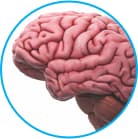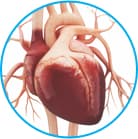Symptoms
Patients with
hypoparathyroidism can exhibit a variety symptoms
Hypoparathyroidism (HPT) can lead to a broad spectrum of
clinical manifestations—ranging from mild to life-threatening—
such as laryngospasm, seizures, or heart failure. Clinical
presentation is largely determined by the severity and rate of
development of mineral imbalance, as well as disease duration.1

Signs and symptoms
Most patients present with mild, nonspecific signs and symptoms associated with changes in mineral homeostasis.2

Neuromuscular3
- Fatigue
- Generalized muscle weakness
- Muscle cramping (sometimes painful),
manifested as carpal and/or pedal spasm - Neuromuscular irritability resulting in tetany
- Bronchospasm and wheezing

Neurologic3
- Paresthesia and numbness, especially
around the mouth and in the fingers and toes - Seizures, spells
- Basal ganglia and brain calcifications

Neuropsychiatric3
- Poor memory and concentration
- Depression
- Anxiety
- Personality disturbances

Cardiovascular3
- Congestive heart failure, including cardiomegaly,
pulmonary congestion, and volume overload - Chest pain
- Arrhythmias
- Heart block
- Prolonged QTc interval
Symptoms may occur independently of mineral levels. Patients may be:
Asymptomatic
despite having hypocalcemia and/or hyperphosphatemia3
Symptomatic
despite being in the target serum calcium range4,5
- Asymptomatic
despite having hypocalcemia and/or hyperphosphatemia3 - Symptomatic
despite being in the target serum calcium range4,5
Due to variability in symptom presentation, frequent monitoring is critical when evaluating patients with hypoparathyroidism.2,3,6
Chronic HPT is associated with comorbidities that can affect several organ systems—including renal, neuropsychiatric, skeletal, cardiovascular, and ophthalmologic systems.3
RECOGNIZING COMPLICATIONSPatients with inadequately controlled hypoparathyroidism can suffer a high burden of illness.7
BURDEN OF ILLNESS